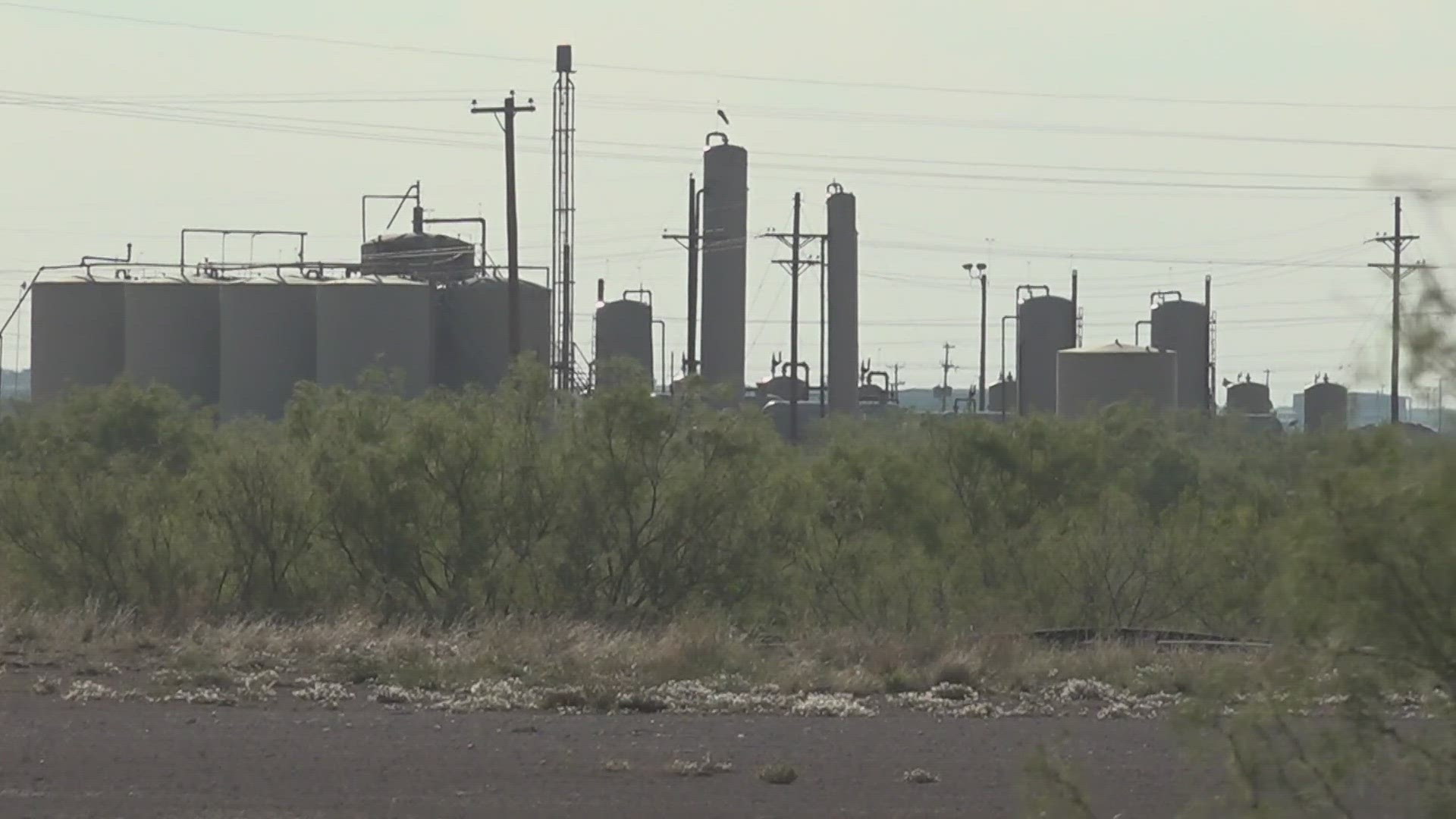MIDLAND, Texas — A new carbon capture and storage site is coming to the Permian Basin potentially as early as 2025.
Environmental company Milestone Carbon will have a 10,000 acre hub in parts of Midland and Upton counties, all in an effort to reduce carbon emissions.
The carbon storage site will take carbon that is typically emitted as waste into the atmosphere and place it in the ground as a liquid through a pipeline system. Trucks for transportation will not be needed, and it will benefit West Texas in several ways.
Cleaner energy production is better energy production.
"It's really around enhancing the competitiveness of oil and gas internationally," Chris Davis, senior vice president of Milestone Carbon, said. "So, Permian Basin oil and gas, we want to make sure that it has low carbon intensity so it can compete with products from all across the world.”
Some carbon stored in the ground is used again. For this site, the process will lead to permanent disposal.
“We end up taking a gas stream, an exhaust stream and we separate out that CO2," Davis said. "Then we compress it into a liquid form – it’s a compressible liquid – and then we put it in a pipeline and dispose of it as we would like saltwater disposal.”
There is excitement behind the location.
“We need really good geology where the CO2 can be injected," Davis said. "We also need to make sure that we have a lot of confidence in the rocks above it to contain the CO2, and we have that out here. We have quite a lot of good data to show that products like this can be stored safely for a long time.”
What’s above the surface will help development and effectiveness.
“[The] Permian Basin’s great because we have landowners who are very much aware of these types of activities, and we have the roads," Davis said. "We have all the pipeline infrastructure already in place – or easily put in place – and again, we’re going to have sites that are quite close to the facilities that would use them, so you don’t need to build long, extensive infrastructure from scratch.”
This new site also sends a message.
“Finding and disposing of carbon in safe locations signals to these new technologies that they can put their new facilities in places like the Permian Basin," Davis said. "So, think low carbon ammonia, think hydrogen – that’s getting talked about quite a lot – but it could also be just plain natural gas power plants that need CCS [carbon capture and storage] as well.”
As decarbonization efforts continue in the Permian Basin, this site might be just a start.
“We like to see technology, talent and investment coming to the Permian Basin as we develop carbon hubs," Davis said.
Davis mentioned that they have gone through the permit process to ensure that the site will protect drinking water and be a safe location for carbon disposal.
Davis noted that they are excited to showcase to the rest of the country how their process can be safely done right here in the Permian Basin.

